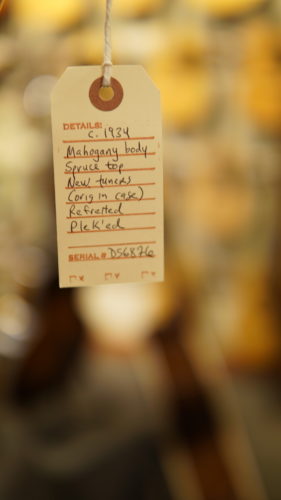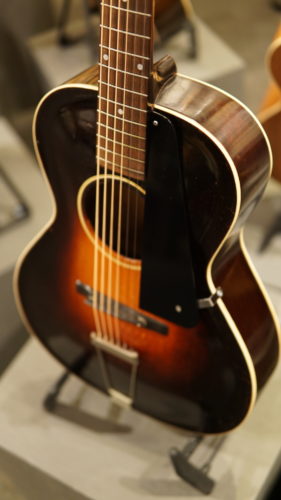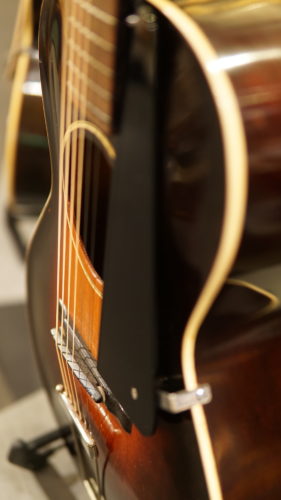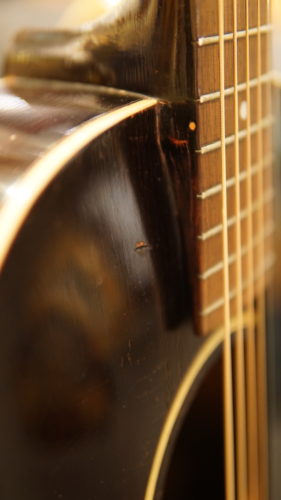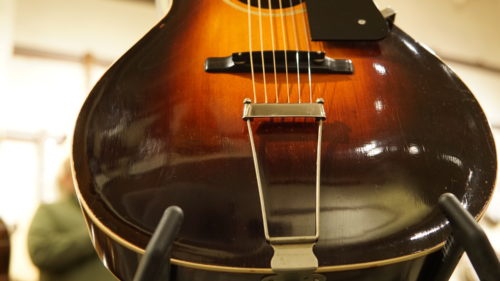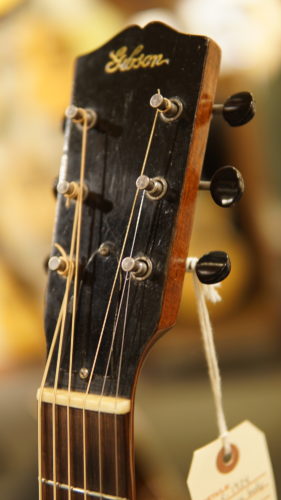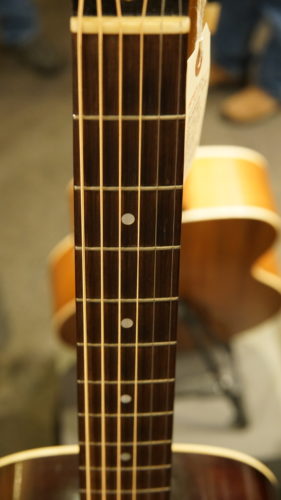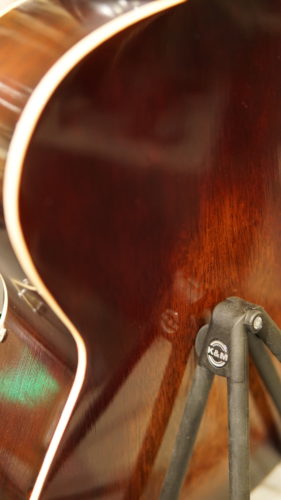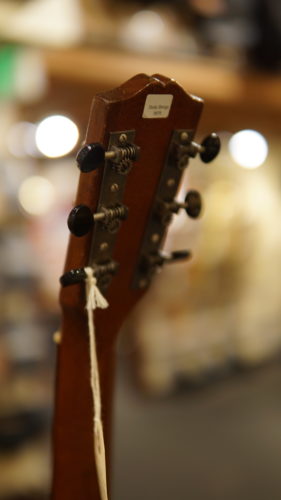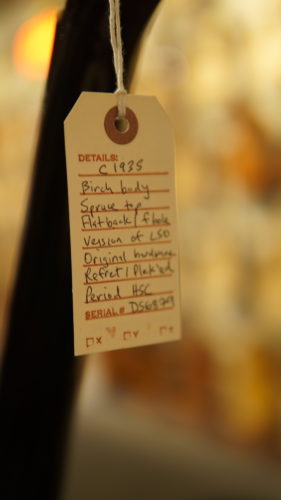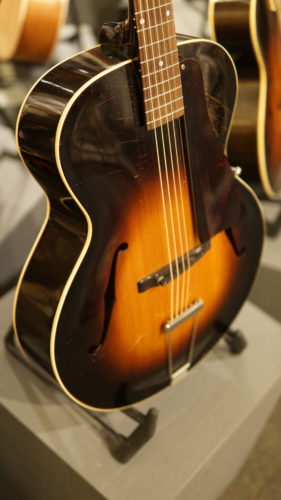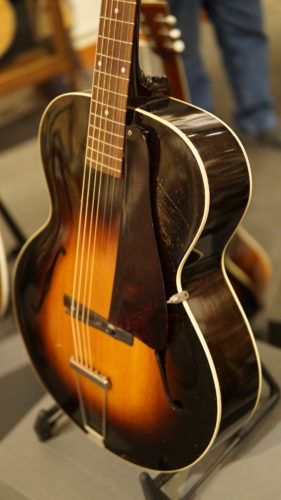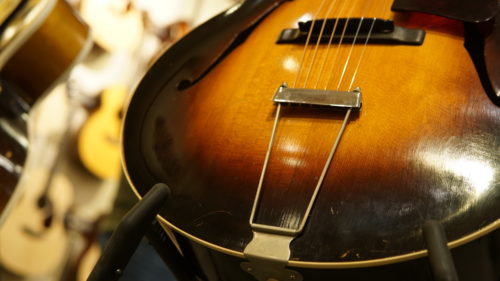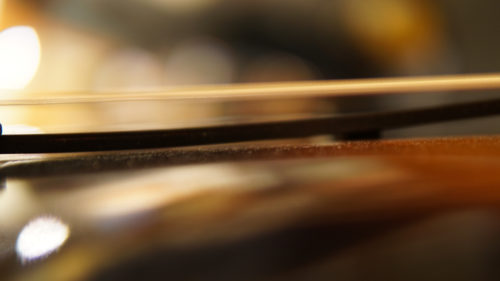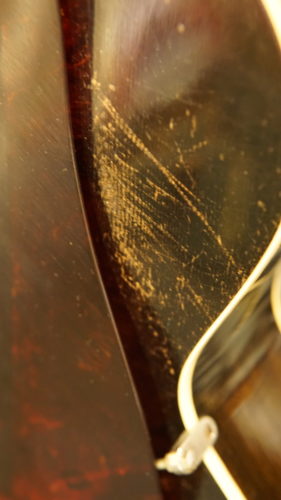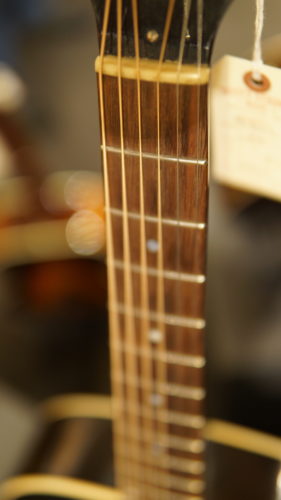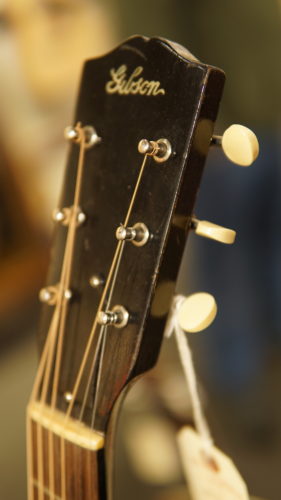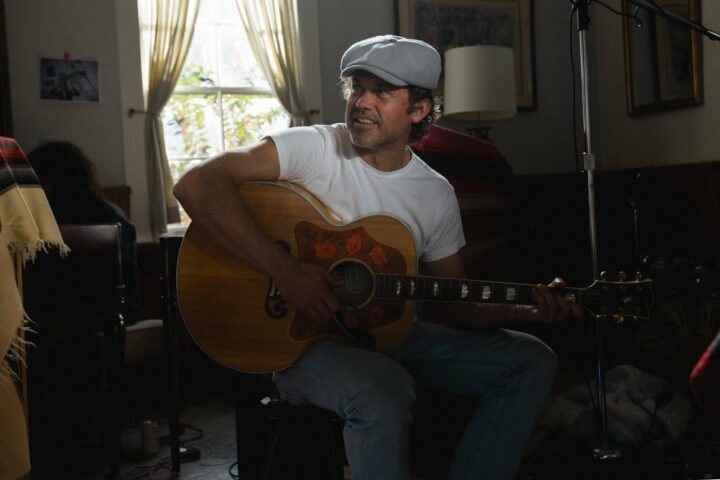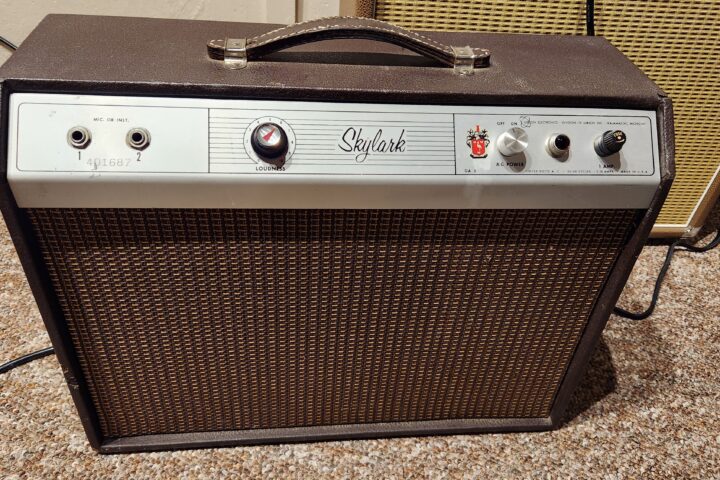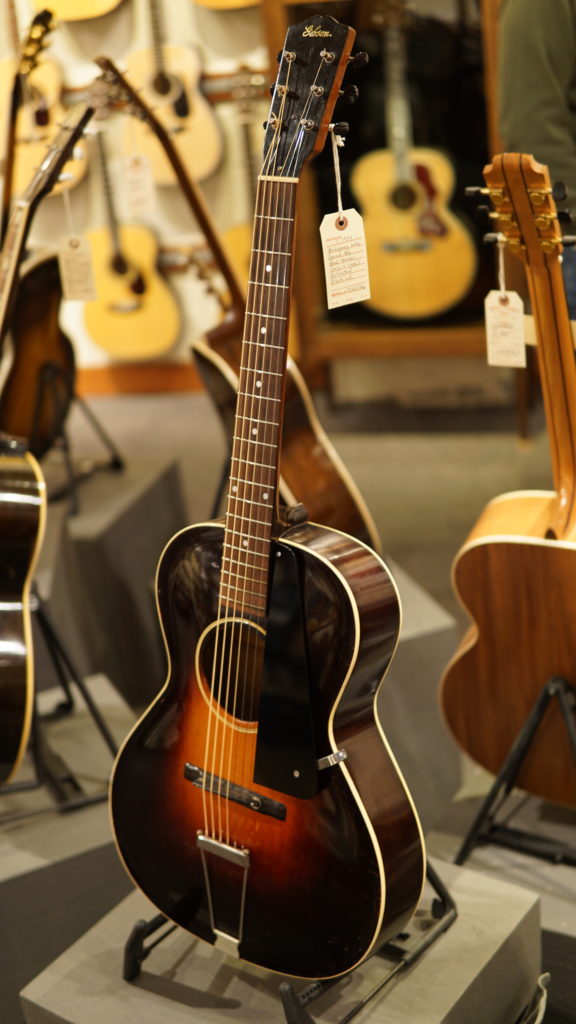
If you’ve ever done a deep dive into vintage Gibson instruments–be they guitars, banjos or ukuleles–you’ve probably experienced the disorienting phenomenon that goes hand in hand with trying to keep track of the changes to models and model numbers. The twists and turns can be subtle, like the move from the script to the block logo, or they can be extreme, like the L-50s we’re featuring here: one a round-holed, 14.5″ archtop with mahogany back and sides from 1934, the other apparently a “transition” model with f-holes on a 16″ body with birch back & sides from late-1934/early-1935 (most likely). We found both of these guitars just down the road at Dusty Strings, where they’ve been teasing us about their imminent arrival for months. The wait was worth it…
First, let’s talk about what these two guitars share: They’re not L-5s, for starters, and really shouldn’t be mistaken for top-of-the-line instruments. They’re simple guitars, with basic appointments, arched spruce tops (with some minor flattening, typical of these guitars) and flat backs. They both have those lovely old Gibson sunbursts, though the ’34’s color hints at a redness that’s not there in the larger ’burst on the ’35. Both guitars have rosewood fingerboards that appear to have been level-sanded and polished when they were both re-fretted and Plek’d (at Mike Lull’s shop) and ebony bridges cranked all the way down (in fact, the folks at Dusty note that the bridge on the ’34 appears cut down). The instruments are a joy to play, with large-ish V-shaped necks, easy action and Gibson’s comfortable scale length.
What differentiates these guitars, meanwhile, is kinda mind-boggling, given how much they share. Just to look at them you could easily assume they were completely different models, with their body sizes and the round hole vs. the f-holes, and then once you learn that the back and side woods are different…well, surely they can’t be the same guitar, separated by mere months in the production cycle…
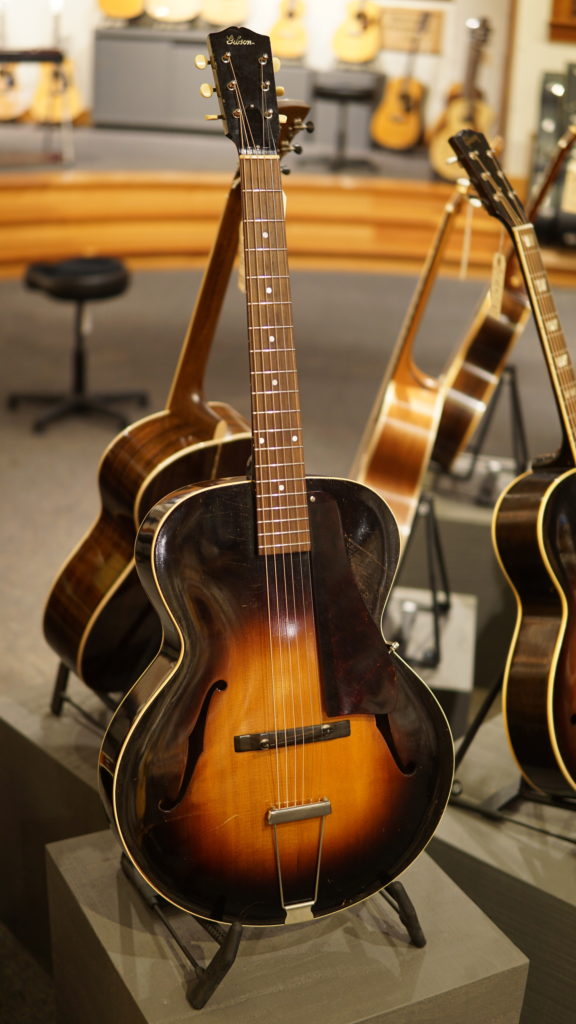
As it happens, those physical differences cause some notable differentiation in their tone, as well. The mahogany and round hole on the ’34 help the guitar present as the louder instrument, in spite of its smaller size. It’s a more present instrument, with a decent bark to it, though without the cut that an arched back, maple and/or f-holes might give it. The ’35 is still a nice-sounding instrument–its tone is softer, easy and mellow; it might record well and be enjoyable in the living room, but probably it wouldn’t make the grade in a group setting.
In addition to the re-fret and Plek work and usual wear, time has taken a toll, albeit minor, on these two. The back and sides of the ’34 appear to have been refinished or oversprayed, its pickguard, pickguard hardware and tuners have been replaced, but the tailpiece looks to be original. The ’35 has a stable, repaired back crack and the tailpiece crosspiece is probably a later replacement, but the tailpiece bale, tuners and (noticeably warped) pickguard are original.
Both guitars are priced at $2,000, the ’34 with a “good-fitting” ’50s hardshell case, the ’35 with a period correct (possibly original) hardshell case.
For more on Gibson’s quirky ways, check out Karl Catteeuw and Rufus Yells take on the confounding history of Gibson ukuleles in issue 40 of the Fretboard Journal.
